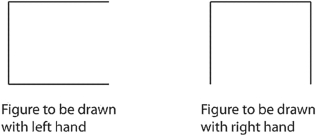Multiple Choice
Franz and colleagues (1996) asked a patient who had had his corpus callosum surgically severed to draw figures like the ones here, each simultaneously with a different hand.  Compared to neurologically intact control participants, they found that this patient
Compared to neurologically intact control participants, they found that this patient
A) was better at producing movements simultaneously with both hands, even when they differed in direction.
B) was selectively impaired when simultaneously producing movements with each hand when they differed in direction.
C) performed poorly and was especially impaired when the figures closely resembled each other.
D) was better at producing movements simultaneously with both hands only when they differed in direction.
Correct Answer:

Verified
Correct Answer:
Verified
Q40: One proposed role of dopamine in the
Q41: Which of the following types of motor
Q42: Where are the primary motor cortex, the
Q43: A laboratory dog has had surgery to
Q44: One limitation of most BMI systems is
Q46: When a voluntary movement such as contracting
Q47: What does it mean to say that
Q48: The supplementary motor area (SMA) is particularly
Q49: Neurons in the spinal cord that can
Q50: Chapin's early work on a brain-machine interface